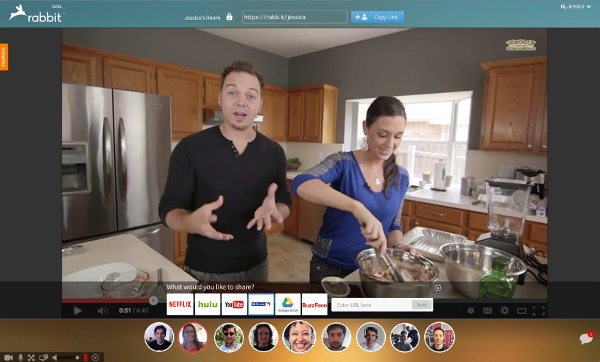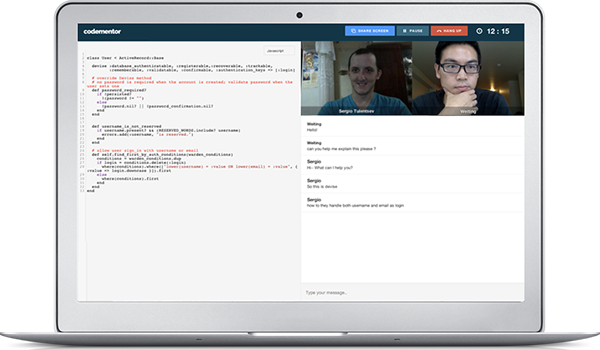The WebRTC market is growing - fast. According to Future Market Insights, it's expected to grow at a CAGR of 45.2% between 2015 and 2025. In 2015 alone, WebRTC companies received over $1 billion in funding in 2015.
So what's next? Here are four interesting WebRTC applications that we’re excited to see in 2016 and beyond.
1. Secure video monitoring
The number of WebRTC-enabled devices expected to exceed 6 billion by 2019. This means that we’ll be seeing this technology not only on the web and mobile, but also in ‘smart’ devices, such as WiFi security cameras.
Several aspects of WebRTC lend itself to video monitoring solutions. First, it’s one of the most secure ways to stream media. End-to-end encryption and the native peer-to-peer (P2P) architecture means that the media being transferred is not subject to surveillance or interception by a server. Consumers also don't need to open up their home network to the public Internet to use a WiFi enabled security camera.
Second, WebRTC is easy for end users to control. By using a supported web browser like Chrome or Firefox, consumers can access and control the video camera on their device. Users can also view feeds from more than one camera at once.

Finally, it’s cost-effective. Developers can build WebRTC-powered video monitoring applications at a much lower cost by using royalty-free video codecs like VP8. Some examples of existing home security solutions built on WebRTC are NodeLink, Camio, and cameras by Amaryllo. Flashphoner also has a WebRTC Media & Broadcasting Server that allows multiple users to view multiple video streams from IP-cameras for more heavy duty video surveillance needs.
Dean Bubley of Disruptive Analysis, arugably the leading WebRTC analyst, recently wrote an article on IoT & Realtime Communications. In his post, he lists embedded communications and contextual communications as two important trends in RTC technology. While there are various tools designed to embed video- and voice-based streams into applications, Bubley points out that "the most important emerging standard is WebRTC". In his words, "the worlds of IoT and RTC are intersecting, and the overlap is likely to widen significantly in 2016 and 2017."
2. Shared live media streaming
Back in 2012, Google Hangouts released a feature that allowed friends in a video chat to watch Youtube videos together. This way, everyone could view each other's reactions at the same time. This 'shared viewing' concept is becoming more and more popular. Gone are the days of trying to hit “Play” at the same time to make sure one person isn’t a few seconds ahead and accidentally reacts too soon.
But why use WebRTC? WebRTC allows developers to focus on the user experience rather than on video streaming. The API takes care of the media engine so that features like shared viewing windows can stream directly inside the browser of each user.

For example, apps like Rabbit and Airtime want to create shared viewing platforms that work across all devices. The idea is to bring people together by allowing them to consume media while engaging in a live conversation. They focus on the ability to stream media from existing sites like YouTube, Spotify, Netflix, Amazon, and more.
As online streaming services become the norm for how we consume media, we expect to see more of these apps in the marketplace.
3. Video conversations with experts
The sharing economy is growing fast with startups like Uber, Airbnb, Car2Go, and more. With WebRTC, companies are able to connect experts with consumers in one-on-one video conversations. Use cases range from tutoring to telehealth, personal training to personal shopping, and more.
WebRTC is appealing for developers for two main reasons:
- The ability to integrate video conversations into the custom design of an application.
- The ability to create custom tracking for each session to gain business intelligence.
First, WebRTC allows designers and developers to create applications that combine video with other components that are part of the user experience. For example, CodeMentor uses WebRTC for audio and video streaming, and Firebase for chat and collaboration. These two components work side-by-side for a seamless, real-time consumer experience.

Another example is LiveNinja’s Kiosks, which connect customers in retail stores with remote salespeople. At these kiosks, consumers press a button to video chat with a brand representative in their native language. The salesperson can also use contextual information to help the consumer with his or her questions.
Second, developers can incorporate logic into each video session to record metrics that are important to the company. With applications like Skype, this information is not easily available. With WebRTC, developers can track session metrics to inform billing scenarios, agent performance, customer satisfaction ratings, and more.
When a customer has an issue that is much easier to show than to describe, a video chat can be extremely helpful in resolving the situation quickly and satisfactorily. However, most people don't want to video chat. Amy Vernon, social media maven and expert on digital content, believes that while video communciations won't completely replace text-based chats, they will provide an invaluable resource for both consumers and brands.
“We’ve seen product unveilings happen via social media - why wouldn’t a car company, for example, release their new models via Facebook Live? Or how about a sport team holding its post-game press conference on Blab, allowing fans to join in the questions? I think we’ll start to see some really creative and new ways for brands to use real-time video beyond just the usual.”
4. Interactive online gaming
Online gaming is a huge market. Visual and audio chats are particularly important for team-based games, where players need to be able to discuss strategy, warn teammates, and talk to each other, all while manning the game controls with their hands. Time is also sensitive in these peer-to-peer 'hands-free' environments.
That's where WebRTC comes in. Besides adding voice and video capabilities, WebRTC allows game data to transfer in real-time between peers without going through a central server. This reduces the critical issue of latency and uses less data overhead during the game.
For example, “The Hobbit: The Battle of the Five Armies” uses WebRTC data channels on a Chrome browser for multiplayer game play. Players can use a web browser or a smartphone touch screen to engage in one-on-one P2P battles.

Another example is Cube Slam, a 3D version of the classic game of Pong that you can play with your friends. WebRTC keeps the game in sync, and reduces server costs by sending game data directly peer-to-peer. If you play the game on Chrome or Firefox, you can see real-time 3D rendering of each other’s video camera feeds with WebGL HTML5 technology. The audio is also adapts to your progress in the game.
WebRTC applications extend even further beyond multiplayer online games. Virtual reality and augmented reality are two areas where WebRTC technology has the ability to take the user experience to a whole new level.
The next generation of WebRTC applications
WebRTC is much more than building a simple video chat application. It’s about finding ways to improve an experience between people over the Internet. In fact, we’re just beginning to see all the innovative ways it can be applied to real-world problems. What do you think? We’d love to hear your thoughts on Twitter @OnSIP!

